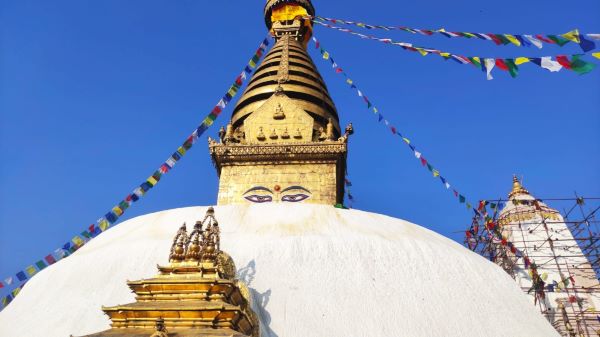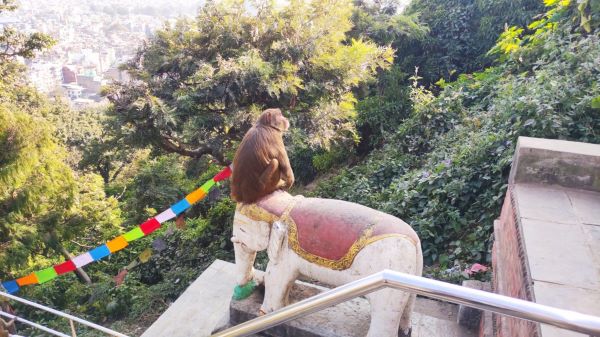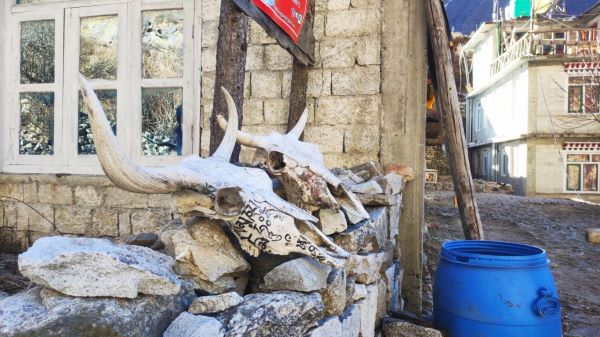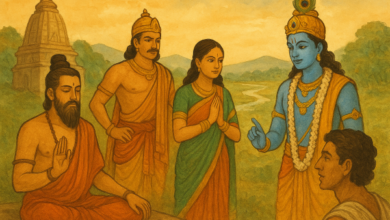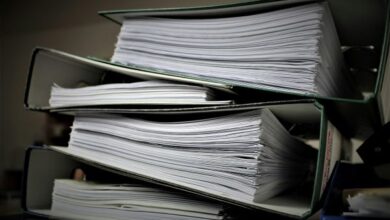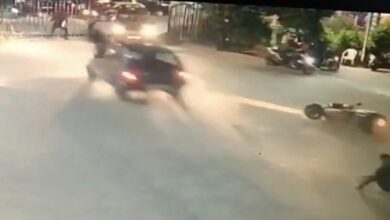Trekking to the Valley of Glaciers in Nepal
Langtang Valley, a glacierised catchment area in the Himalayas, offers an experience of a lifetime
 When my friend proposed trekking in Nepal, I was in two minds. I was unsure about walking the mountainous terrain with gravelly paths, and I was quite antsy about this challenge. Nonetheless, I was curious to explore a new place. So, we started planning for the trek. After thorough research on the internet, we agreed on Langtang Valley, or the Valley of Glaciers.
When my friend proposed trekking in Nepal, I was in two minds. I was unsure about walking the mountainous terrain with gravelly paths, and I was quite antsy about this challenge. Nonetheless, I was curious to explore a new place. So, we started planning for the trek. After thorough research on the internet, we agreed on Langtang Valley, or the Valley of Glaciers.
Langtang, a quaint stone village, is to the north of Kathmandu and is dominated by the Langtang Lirung peak. It is a glacierised catchment area in the Himalayas.
All the information that I found online piqued my interest and helped allay my fears. I geared up for the trek. We decided on a mid-December date for the journey. It was interesting to know that as per the Nepali calendar, we would be travelling in the year 2081. I found the trivia online that the local calendar is 57 years ahead of the Gregorian one. It felt like time travelling without a time machine.
Journey begins
There are several entry points to Nepal from India. We chose the one from Bagdogra in north Bengal. We took a bus from Kolkata on the evening of December 13th and reached Bagdogra early the next morning. I was with two friends who are seasoned trekkers.
We took an autorickshaw from Bagdogra to reach the Nepal border. The last Indian village in West Bengal is Panitanki and the first town on the other side is Kakarbhitta. One has to provide photo identity proof to cross the border.
The Indian auto driver wished us a happy journey and dropped us at the border from where we took a local vehicle to reach Kakarbhitta. Our bus to Kathmandu was at 3.30 pm. So, we had about seven hours to explore the first Nepal town.
Kakarbhitta is a quiet place where all the buzz is concentrated in and around the main market and bus terminus. We rented a hotel room to freshen up. Before that, we had to visit a government-run currency exchange depot. If you are travelling to Kathmandu via North Bengal, it is advisable to exchange Indian rupees in Kakarbhitta. Most of the private depots in the Nepal capital city do not accept Indian currency.
We had skipped food the night before and were famished. So, we ran to a nearby restaurant and ordered chow mein. The noodles which were served were thicker than the usual ones we get in India and were yellow. The food tasted great.
After fuelling up, we went around the main market. It was a small place with retail and wholesale shops and it did not take us much time to finish our reconnaissance. My friend picked up a local SIM card that benefitted us all during our Nepal stay.
While walking the streets, we noticed a local restaurant selling raksi, the local brew. The old couple running the shop were friendly and welcomed us. We realised how exhausted we were once we relaxed inside the cosy shop.
It was 1 pm already and we gulped down the remaining raksi in the bottle. We still had time for lunch and decided to have local cuisine. The hotel where we rented a room served Thakali food and we went for it. Thakali is a local ethnic group with a unique culture, tradition and food.
When we got onto the bus at 3.30 pm, we were contended after a sumptuous Thakali mutton thali.
A veil of dust
We reached Kathmandu early the next morning. It was a 14-hour bus trip and the food on the way was not up to our taste buds. So, we kept ourselves happy with the thought of the last lunch, a packet of dry fruits and an argument over where to stay in Kathmandu. Finally, the consensus was to stay near the Swayambhunath Stupa.
In Kathmandu, we were greeted with a veil of dust and we had to put up our masks immediately. Since we were travelling light, we decided to walk to Swayambhu from the bus terminus, a distance of 5 km. It took us about an hour, including a 20-minute halt at a small but warm tea stall. We found a budget hotel for a night, put our bags in the room, freshened up and left for the stupa.
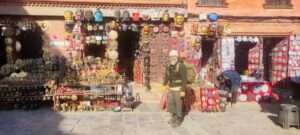
One has to climb 365 stone steps to reach the stupa. Along the staircase were many stalls selling stone jewellery, rudraksh, handicrafts, edibles and water bottles. The place had many monkeys and we were warned against dangling food to them.
The stupa with four gates was beautiful. We got a leaflet from the ticket counter that explained the ancient history of the place. Several shops selling jewellery, gems, metal artifacts and thangka paintings added different hues to the place.
Our guide, Shiva Adhikari, was to meet us the next morning. So, we went to a local eatery, had a few glasses of raksi and ended the evening with an early dinner.
Shiva arrived by 5.30 in the morning. We were getting ready and had no idea that our trek would start that morning. The guide insisted that we take the morning bus to Syafru Besi, the base village. The bus was leaving in an hour and we had just 10 minutes to pack our bags and get going. It was a rush and we were unhappy about the guide not informing.
Nonetheless, we took a taxi, reached the bus stop and started the second phase of our journey.
The base village
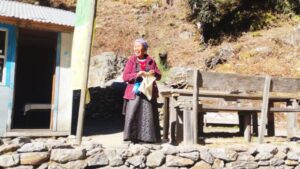
The guide had misguided us once again. We were told that Syafru Besi was a four-hour bus journey. It took us about eight hours. By the time we reached the base village, it was cold and windy. The sun went down after some time. We freshened up quickly and went out for a walk. The trek would start the next day. So, we had an early dinner and called it a day.
We woke up at five the next morning. Our bags were already packed. We finished breakfast and geared up for the trek. By 7 am, we were out of the hotel.
The trek
For the first 45 minutes, we had to walk on a motorable road before we entered the forest path. The entire trek was alongside a stream from a glacier in Langtang. We were exhausted from the long walk but the sound of the stream and the smell of the forest kept our spirits up.
After walking for about five hours, we reached a lodge by the stream. It was lunchtime. We put down our backpacks and stretched. The afternoon sun comforted our aching joints. We relaxed for some time before gathering around the fire inside the wooden restaurant.
The lunch was simple — dal, rice, vegetables and a spicy chutney. It was enough to reenergise us. We decided to spend another half an hour under the sun. Our destination for the day was the Lama Hotel in Rimche at 2,400 m.
For their own
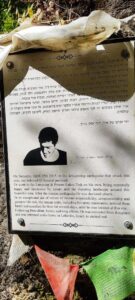
On our way, Shiva, our guide, told stories about the 2015 earthquake and how many perished while trekking to Langtang. We stopped at a place where we saw a placard nailed to a rock. It was about an Israeli army man who died in the quake.
The severe earthquake struck the country in April 2015, killing about 9,000 people and injuring thousands. Or Assaraf from Israel’s Lehavim was trekking alone when the tremor shook the Himalayan nation.
Assaraf was reported missing. His colleagues from the Israel Army came to Nepal as part of a rescue team. After days of searching, they found his body at the site where the placard is placed now. The story of Assaraf is written on the placard, which is a constant reminder to passers-by not just about the devastation but also the army’s perseverance. They ensured that they found their friend in the debris and took him back to their homeland.
We continued walking because we had to reach Rimche before sundown. The guide told us to be alert as we were about to enter the zone of the Himalayan langur, one of the endangered species. We saw a troop of them. They looked harmless and did not bother the trekkers. We took a few photographs and continued with our journey.
We reached Rimche around 4 pm and stopped at a lodge along the slope. The view of the range was breathtaking. Shiva told us that the Lama Hotel was another hour’s walk. But we decided to stay at the lodge.
In the evening, we met the Singaporean trekker again. Her name was Audrey Long Wee Seng. She was a friendly lady in her fifties. She loves travelling and usually goes on solo trips.
Langtang village
The plan was to reach Langtang village by the next evening. The first half of the trek was through a forest path and it took us about four hours to reach a lodge where we stopped for lunch. The place was sprawling. We finished our lunch comprising dal, rice and vegetables. The host made us a special spicy chutney of local pepper.
We rested for a while before resuming the trek. The path got arduous and I stopped frequently for rest. Shiva slowed down to walk with me. He showed me the village from a distance and said it was not too far. But I knew he was just trying to keep my spirits up. We tried not to stop anywhere for rest till we reached the periphery of the village.
We wanted to rest for some time and have tea. But there was something else that caught my eyes. Sea buckthorn is a deciduous shrub and the berries are consumed in various ways. The owner of the lodge where he had stopped offered us the berry juice. It was sweet and sour and helped us regain strength.
When we reached Langtang, the sun was on its way down. The temperature dropped below -4 degrees and we desperately wanted a glass of warm raksi near the fireplace of Mountain View Lodge where we were put up.
As we gathered around the fireplace, Shiva started telling us about the next day’s itinerary. The plan was to climb up to Kyanjing Gumpha and then start descending to Rimche. However, two of us were unwilling to trek the next day and decided to stay in the village. Another friend was interested to see the gumpha.
We spent two nights at Langtang. Our young host, Tshhering, was a pleasure to talk to. She would discuss politics, business and what Nepal needed to be a better place. On the morning of our departure, she made special Tibetan bread. We had a memorable time at the lodge. By 7.30 am, we said our goodbyes and exchanged phone numbers. It was a cold morning and we had to brace for a frozen trail.
Back to the base
That night, we stayed at the same lodge in Rimche. We met other trekkers too some of whom were going up to Langtang. Audrey and her guide reached later in the evening. We all relaxed in the common room and talked about the trek.
The next day would be tough, we were told. The descent was steep and we had to be extra careful. It was stressful and the weather was gloomy. After four hours of trekking, we relaxed over a hot and delicious lunch on a very cold day.
We spent the night at Syafru Besi. I wanted a hot bath but had no luck. So, I went for a cold shower before going out with my two friends for raksi. We found a cosy local bar in the vicinity and sat down for the next two-and-a-half hours. Audrey joined us. She was curious about raksi and we offered him a warm glass of the local brew.
Our bus to Kathmandu was early the next morning. The trek was over. The vacation came to an end. We decided to spend two days in Kathmandu before going back to Siliguri.
I would have said I was sad as the road ended. But deep inside, I was still excited as I was sure to come back to the Himalayas soon. For now, it was the memory of Langtang that I was taking with me.



